The National Institute of Allergy and Infectious Diseases is one of the 27 institutes and centers that make up the National Institutes of Health (NIH), an agency of the United States Department of Health and Human Services (HHS). NIAID's mission is to conduct basic and applied research to better understand, treat, and prevent infectious, immunologic, and allergic diseases.

The Influenza Genome Sequencing Project (IGSP), initiated in early 2004, seeks to investigate influenza evolution by providing a public data set of complete influenza genome sequences from collections of isolates representing diverse species distributions.

The Vaccine Research Center (VRC), is an intramural division of the National Institute of Allergy and Infectious Diseases (NIAID), part of the National Institutes of Health (NIH), US Department of Health and Human Services (HHS). The mission of the VRC is to discover and develop both vaccines and antibody-based products that target infectious diseases.

Robert Merritt Chanock was an American pediatrician and virologist who made major contributions to the prevention and treatment of childhood respiratory infections in more than 50 years spent at the National Institute of Allergy and Infectious Diseases.
Bernard Moss is a virologist at the National Institute of Allergy and Infectious Diseases, part of the United States National Institutes of Health. He is the Chief of the NIAID Laboratory of Viral Diseases and of the NIAID Genetic Engineering Section. He is known for his work on poxviruses.
Norman Post Salzman was an American virologist. He spent much of his career as a scientist at the United States National Institutes of Health, where he rose to become the chief of the Laboratory on the Biology of Viruses; after retiring from the NIH in 1986, he worked at Georgetown University and later at the Frederick Cancer Research and Development Center. Salzman died of pancreatic cancer in 1997 at age 71.
Gary J. Nabel is an American virologist and immunologist, and President and chief executive officer of ModeX Therapeutics in Natick, Massachusetts.
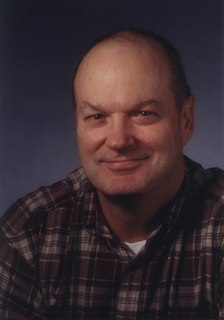
Brian R. Murphy is an American virologist and former co-chief of the Laboratory of Infectious Diseases at the National Institute of Allergy and Infectious Disease.
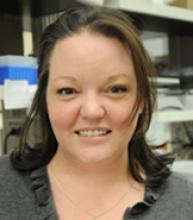
Sonja Marie Best is an Australian-American virologist. She is chief of the innate immunity and pathogenesis section at the Rocky Mountain Laboratories. Best researches interactions between pathogenic viruses and the host immune response using flavivirus as a model.

Emmie de Wit is a Dutch-American virologist. She is chief of the molecular pathogenesis unit at the Rocky Mountain Laboratories. Her research combines pathogenesis studies with detailed molecular analyses to identify molecular determinants of severe respiratory tract disease within the virus and the host.
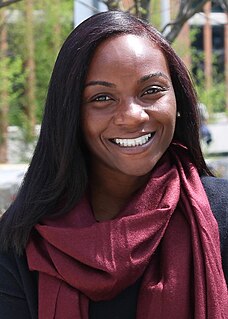
Kizzmekia "Kizzy" Shanta Corbett is an American viral immunologist. She is an Assistant Professor of Immunology and Infectious Diseases at Harvard T.H. Chan School of Public Health and the Shutzer Assistant Professor at the Harvard Radcliffe Institute since June 2021.

Arnold Monto, MD, FIDSA, FACE, DABMM is an American physician and epidemiologist. At the University of Michigan School of Public Health, Monto is the Thomas Francis Jr. Collegiate Professor of Public Health, professor of epidemiology, and professor of global public health. His research focuses on the occurrence, prevention, and treatment of infectious diseases in industrialized and developing countries' populations.

Kim Yarbrough Green is an American virologist. She is chief of the caliciviruses section in the laboratory of infectious diseases at the National Institute of Allergy and Infectious Diseases. She researches noroviruses in human disease, disease prevention, and control strategies.

Vanessa M. Hirsch is a Canadian-American veterinary pathologist and scientist. She is a senior investigator and chief of the nonhuman primate virology section at the National Institute of Allergy and Infectious Diseases. Hirsch researches AIDS pathogenesis, the evolution and origins of primate lentiviruses, and HIV vaccine development.
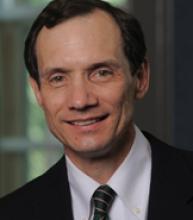
Dr. Michael J. Lenardo, is the Chief of the Molecular Development and Immune System Section and the founder and co-Director of the Clinical Genomics Program at the National Institute of Allergy and Infectious Disease (NIAID), National Institutes of Health (NIH). Trained as a geneticist, molecular biologist, and immunologist, his research examines how cells of the immune system defend themselves against various pathogens, including viruses and bacteria. His research has investigated genetic abnormalities in the immune system, mechanisms of cell death, genetic diseases of immune homeostasis and autoimmunity, and development of novel diagnostics and therapeutics for diseases of the immune system. Lenardo's contributions to science and medicine have shown the possibilities of genomic research in developing precision medicine diagnoses and treatments for disease in humans. In 2006 he was appointed Officer of the Most Excellent Order of the British Empire (O.B.E.) by Queen Elizabeth II. In 2019 he was inducted into the National Academies of Sciences and the National Academy of Medicine, considered among the highest honors awarded to a U.S scientist and medical researcher respectively.

John Ring La Montagne was a Mexican-American biomedical scientist who served as the deputy director of the National Institute of Allergy and Infectious Diseases from 1998 to 2004. He specialized in viral vaccines, HIV/AIDS research, and oversaw NIH's biodefense research after the September 11 attacks.
Gain-of-function research is medical research that genetically alters an organism in a way that may enhance the biological functions of gene products. This may include an altered pathogenesis, transmissibility, or host range, i.e. the types of hosts that a microorganism can infect. This research is intended to reveal targets to better predict emerging infectious diseases and to develop vaccines and therapeutics. For example, influenza B can infect only humans and harbor seals. Introducing a mutation that would allow influenza B to infect rabbits in a controlled laboratory situation would be considered a gain-of-function experiment, as the virus did not previously have that function. That type of experiment could then help reveal which parts of the virus's genome correspond to the species that it can infect, enabling the creation of antiviral medicines which block this function.

Hilary D. Marston is an American physician-scientist and global health policy advisor specializing in pandemic preparedness. She is a medical officer at the National Institute of Allergy and Infectious Diseases.
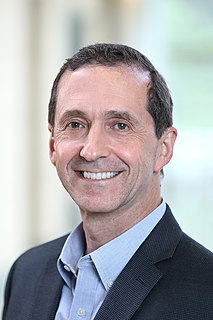
John R. Mascola is an American physician-scientist, immunologist and infectious disease specialist. He was the director of the Vaccine Research Center (VRC), part of the National Institute of Allergy and Infectious Diseases (NIAID), National Institutes of Health (NIH). He also served as a principal advisor to Anthony Fauci, director of NIAID, on vaccines and biomedical research affairs.
Anne Moscona is an American virologist and pediatrician. She is best known for identifying cell entry mechanisms for enveloped respiratory viruses, elucidating general infection mechanisms that apply to parainfluenza virus, Nipah virus, measles virus, and other viruses, and for applying this knowledge to identify antiviral strategies to prevent infection by viruses including SARS-CoV-2. She is frequently consulted as a medical expert during viral outbreaks, including epidemic and pandemic influenza. Since 2016, she has served as the Sherie L. Morrison Professor Microbiology & Immunology, Professor of Pediatrics, and Professor of Physiology & Cellular Biophysics at Columbia University Medical Center in New York City, where she directs the Center for Host Pathogen Interaction. In 2022, Moscona was elected as president of the American Society for Virology, the nation's leading virology research organization, and will lead the organization starting in July 2023. For the last two years she has served the American Society for Virology as Councilor for Medical Virology.














